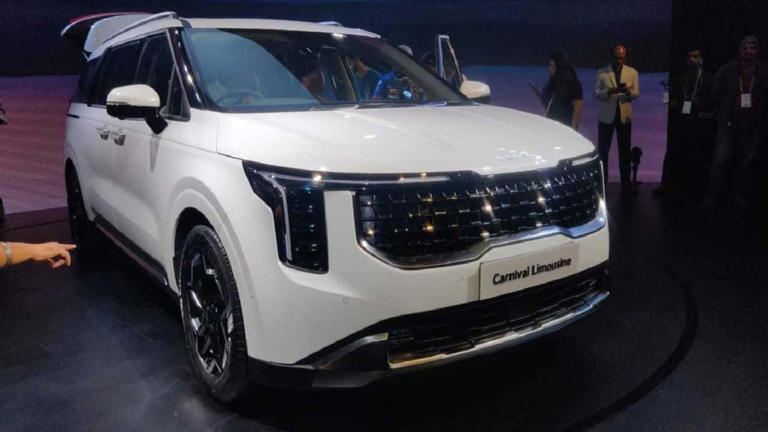
Used Car vs New Car Loans in 2025: Which One Should You Choose?
Table of Contents
Buying a car is a major financial decision, and for many Indians, it often involves taking out a loan. Whether you’re considering a brand-new vehicle or a pre-owned one, both options come with their own set of advantages—and challenges—when it comes to financing. But which loan is more cost-effective, flexible, and suited for you?
In this guide, we compare used car loans vs new car loans on critical factors like interest rates, loan terms, down payment requirements, approval process, and overall cost of ownership—to help you make an informed decision.
1. Interest Rates: Lower for New Cars, Higher for Used Cars
One of the most important considerations is the interest rate.
- New Car Loans: These generally come with lower interest rates, often ranging between 8% to 10% per annum depending on your credit score, income, and relationship with the lender. Since new cars carry less risk, lenders offer better rates.
- Used Car Loans: Interest rates for used cars tend to be higher, typically 11% to 16%, due to the increased risk of depreciation, uncertain vehicle condition, and resale value.
🔍 Verdict: New car loans win here, as they’re cheaper in the long run.
2. Loan Tenure: Longer for New Cars
- New Car Loans: Lenders allow repayment tenures of up to 7 years, making EMIs more affordable. This also provides flexibility if you’re on a budget.
- Used Car Loans: The tenure is usually shorter, around 3 to 5 years, due to the depreciating nature of older vehicles. Shorter tenures mean higher monthly EMIs.
🔍 Verdict: New cars offer better flexibility with longer repayment terms.
3. Loan-to-Value (LTV) Ratio: Higher for New Cars
- New Cars: Lenders often finance up to 90-100% of the on-road price, especially if you have a strong credit profile. Zero down payment schemes are also common.
- Used Cars: LTV is typically 60% to 80% of the vehicle’s evaluated value. This means a larger upfront down payment is needed from your side.
🔍 Verdict: New car loans require less money upfront.
Car ABS Light On Dashbord What’s That it mens?
4. Vehicle Choice and Depreciation
- New Cars: You get access to the latest models, warranty coverage, and better mileage. However, a new car depreciates by 20-30% within the first year.
- Used Cars: Depreciation is slower after the first 2-3 years. A used car offers better value for money upfront, but the choice is limited to what’s available.
🔍 Verdict: Used cars are budget-friendly, but you must do thorough checks.
5. Approval Process and Documentation
- New Car Loans: Generally smoother and faster. Most dealers have tie-ups with banks/NBFCs, allowing for instant loan approvals and minimal paperwork.
- Used Car Loans: More scrutiny is involved due to risks around ownership history, vehicle condition, and resale value. Expect more documentation and longer approval times.
🔍 Verdict: New car loan processing is faster and more seamless.
6. Insurance Costs
- New Cars: Require comprehensive insurance, which is more expensive. Some lenders bundle insurance and road tax into the loan amount.
- Used Cars: Insurance costs are significantly lower, especially if you opt for third-party coverage. However, you may need to add on features like own-damage or zero-dep for better protection.
🔍 Verdict: Used cars save you money on insurance premiums.
7. Resale Value and Warranty
- New Cars: Come with a manufacturer warranty (3-5 years) and better resale value in the long run if maintained well.
- Used Cars: Warranties may have expired or be limited to just a few months if purchased from a certified dealership. Resale value depends on age, mileage, and condition.
🔍 Verdict: New cars offer peace of mind and higher resale potential.
8. Total Cost of Ownership (TCO)
When you calculate the total cost of the car over 5–7 years (loan interest + insurance + maintenance + depreciation):
- New Cars: Higher upfront cost and faster depreciation
- Used Cars: Higher loan interest but lower purchase and insurance cost
🔍 Verdict: Used cars can be more economical in the short term if the vehicle is in good condition and the loan is repaid quickly.
✅ When to Choose a New Car Loan
- You want long-term reliability and latest features
- Lower interest rates and flexible tenure matter to you
- You’re okay with higher initial costs for peace of mind
✅ When to Choose a Used Car Loan
- You have a limited budget or want to avoid heavy EMIs
- You can pay a higher down payment
- You’re okay with a shorter loan tenure and higher interest rate
Conclusion: Choose Based on Your Needs, Not Just Numbers
There’s no universal answer to the used vs new car loan debate—it all depends on your financial health, driving needs, loan eligibility, and future plans. If long-term reliability and better loan conditions matter, a new car loan is ideal. If you’re looking for lower upfront investment and quicker ownership, a used car loan makes better sense.
Make sure to compare lenders, check credit score impact, and calculate the EMI and total loan cost before signing the dotted line.
